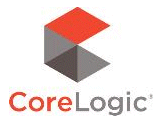– Time on Market Grows in Some Large Metros
– Inventory increased 5 percent nationally in December, 10 percent in larger markets
– Overall, 15 percent of listings saw price reductions
– For-sale homes in 40 percent of large markets experienced a longer time on market
– Median listing price in December was $289,000
Santa Clara, CA – Jan. 3, 2019 (PRNewswire) The U.S. housing market showed continuing signs of cooling in many of the nation’s largest metros in December. According to realtor.com®’s December housing report today, the largest markets saw a 10 percent increase in inventory, compared to a nationwide average of 5 percent, as time on market decelerated, listing price growth slowed and price cuts increased.
![]()
Homes sold at a pace of 80 days in December, three days faster than last year. However, this rate is decelerating, as December 2017 saw homes sell six days faster compared to the previous year. On average, typical properties on the list of 45 top metros* spent the same amount of time on the market as the previous year, while 19 markets saw the typical property actually spend more time on the market than last year. Properties in San Jose, Calif., Seattle and Nashville, Tenn., typically spent 14, 10 and six more days on the market this December, respectively. On the flipside, properties sold more quickly than last year in Birmingham, Ala., Milwaukee and Richmond, Va. at 12, 11 and 10 days, respectively.
“Sellers are adjusting their strategies, especially in slowing, pricey markets with growing availability of homes for sale,” said Danielle Hale, chief economist for realtor.com®. “Although buyers may not find a bargain, the price discounts and recently lower borrowing costs may entice upper-tier buyers back into the market. By contrast, entry-level shoppers continue to contend with declining availability of homes for purchase, albeit at a slower rate.”
Nationally, the percentage of listings that saw price reductions increased to 15 percent in December, up from 13 percent a year ago. The increase is being driven by the nation’s largest markets. In fact, 38 of the 45 top markets saw an increase in the share of price reductions. Charlotte, N.C., topped the list with the share of price reductions growing by 10 percent, from 14 percent last year to 24 percent in December. It was followed by San Jose (+10 percent), Tampa (+9 percent), Phoenix (+9 percent) and Seattle (+8 percent).
The median U.S. listing price grew 7 percent year-over-year to $289,000 in December, lower than last year’s increase of 8 percent. Of the 45 top metros reviewed, 32 still saw year-over-year gains in their median listing price, but only 11 markets outpaced the national growth rate of 7 percent. Milwaukee (+14%), Indianapolis (+12%), and Kansas City, Mo. (+12%) are some of the larger markets that posted the highest year-over-year median list price growth.
The steepest declines in median listing prices were felt in San Jose, Calif., and San Francisco, which were down 12 percent and 4 percent, or $130,000 and $33,000, respectively. Austin, Texas, Houston, Dallas, Nashville, Tenn., Charlotte, N.C., and Jacksonville, Fla. also saw declines. However, selling prices in some of these markets are not yet reflecting these declines.

* Columbus, Ohio, Denver, Las Vegas, Providence-Warwick, R.I., and Sacramento, Calif. were excluded due to data revisions or data unavailability.
About realtor.com®
Realtor.com®, The Home of Home Search℠, offers an extensive inventory of for-sale and rental listings, and access to information, tools and professional expertise that help people move confidently through every step of their home journey. It pioneered the world of digital real estate 20 years ago, and today is the trusted resource for home buyers, sellers and dreamers by making all things home simple, efficient and enjoyable. Realtor.com® is operated by News Corp [Nasdaq: NWS, NWSA] [ASX: NWS, NWSLV] subsidiary Move, Inc. under a perpetual license from the National Association of REALTORS®. For more information, visit realtor.com®.
Contact:
Lexie Puckett-Holbert
lexie.puckettholbert@realtor.com






